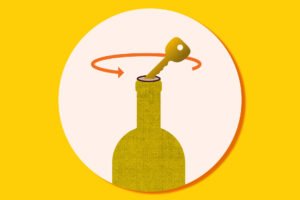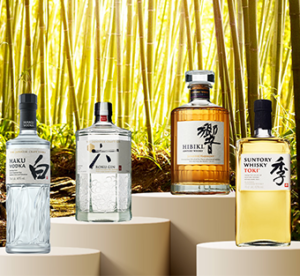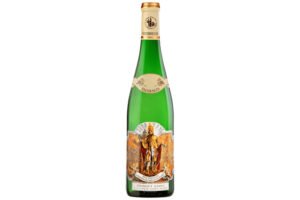Science Makes a Mockery of Tasting Notes

[ad_1]
Your wine tasting notes are probably wrong – for other people, at least.
A rose is a rose is a rose may not actually be the case when it comes to taste.
New research indicates that your vanilla may not in fact be Johnny’s vanilla. Johnny’s vanilla may be less intense than yours, or gasp, Johnny’s repertoire of flavor associations may not name your vanilla as vanilla; more vexing still, this note may not even make a bow as solo artist in his symphony of flavor.
“We don’t have the equivalent of eye glasses or hearing aids for taste buds,” says Virginia Utermohlen Lovelace, PhD, a taste researcher who worked for many years at Cornell University’s Division of Nutritional Sciences. But Lovelace’s research, and the research of her colleagues, “shows that there are significant differences in the way the general population tastes and perceives different flavors”. There are essentially four different kinds of tasters, and some flavors that are perceived by certain groups of tasters completely elude others.
This could have vast consequences for the wine world, which has historically depended on delightfully (to some) flowery descriptors to move product. Such as a Syrah hitting “the palate with a crescendo of intense, ripe, concentrated black fruits interwoven with barrique, charcoal and burning ember-like flavors. [… ] Don’t miss it!”
The issues one might raise with descriptors like this from one of the world’s most beloved and controversial wine critics are broad and unwieldy, but largely fall into two camps: biological, primarily, but also, many say, cultural.
Biological imperatives
Our palates more variable than one might think, considering humans all over the planet are known to consume everything from kale juice to moldy dairy products to buttered and fried calves brains. A large range of flavors, textures and aromas are enjoyed by the vast majority of people in every culture, with five major modalities of taste detected: sweet, salty, sour, bitter, umami.
The number of papillae, or taste buds vary significantly from tongue to tongue Lovelace explains. Their number and the way they work determines the concentration of the five modalities detected. There are four types of tasters, she says: sweet, hypersensitive (aka supertasters), sensitive and tolerant.
Within each category, Lovelace adds, there are aberrations. In the sweet category for example, some of these types of tasters may have a mutation on their transient receptor potential vanilloid 1 (TRPV1) gene, which will cause spices like capsaicin to register as extra hot, and will cause alcohol to be sensed as heat (meaning high-alcohol wines cannot be tolerated by these types of tasters). It also causes certain elements in Sauvignon Blanc and Cabernet Sauvignon, for example – methoxypyrazine – to taste unpleasantly bitter. (These tasters also spurn green peppers).
Hypersensitive tasters tend to prefer “the complexity of a Pinot Noir. They’ll notice the fruity flavors, the complexity and notice things no other type of taster would pick up on,” Lovelace says. “Sensitive tasters may miss some of what the hypersensitives get, but they can appreciate the Pinot Noirs, while also loving Cabernets. The tolerant tasters are the meat and potatoes tasters. They don’t get what the fuss is about Pinot Noir, or other lower-alcohol wines, and they love bold, flavorful wines that pack a punch. They don’t like whites.”

© Wikimedia
| Why discuss gooseberry flavors with someone whose frame of reference is more about green mangoes?
There are also certain tasting blocks people have, analogous to an inability to see certain colors, or hear certain notes. Lovelace says that the compounds beta-ionone, commonly found in Pinot Noir, and beta-damascenone, found in many reds, register as a complete blank to many tasters. Those who can pick those notes up may describe lavender, flowers or berries when tasting them.
“Same thing with indole, vanilla and guaiacol,” she says. “For some, a little bit guaiacol, which often comes out in oaked wines, is lovely. But for others, it’s a complete turn off. I think this is why oaked Chardonnay is so divisive.”
Lovelace says that she doesn’t have hard and fast percentages of each type of taster, because her sample pool was in the hundreds, but that certain patterns emerged.
“One thing I can say with confidence is that people tend to become more tolerant as they get older,” Lovelace says. “The other thing I will say is that people who are professional tasters – sommeliers and chefs – do not see the same kind of diminishment or change in their tasting capacities. I would also say with confidence that if the wine industry wants to attract younger consumers, they should stop making people feel bad for liking sweet wines. Because that is what will naturally appeal to them.”
Cultural ties
Making people feel bad about what they like is antithetical to hospitality, says Paul Grieco, owner of New York City’s Terroir.
“We do not always do as good of a job as we should in the hospitality industry of telling stories,” Grieco says. “Describing what’s in the glass is boring. It can also be dangerous, because if I tell a guest what I taste and their taste buds tell them something different, it could potentially offend them, or make them feel bad. It certainly won’t make them feel excited.”
The industry also preaches the gospel of dry wines when really, people prefer sweet wines.
“We have 90 wines by the glass, typically about 30 Rieslings,” says Grieco. “We offer our guests two sips of Riesling, one off-dry and one Trocken, then walk away. More than 50 percent of the time, they choose the one with more residual sugar, and that’s great! We want to rock people’s worlds. Tell them stories about who is making the wine and where it came from, not screaming about sugar levels.”
It seems that California Wine Country got the memo, though they may not advertise it. Meiomi Pinot Noir has 10 grams of residual sugar, as does Caymus Special Select Cabernet, both top-selling wines marketed and consumed as serious dry wines, but clearly run by savvy execs who see the benefit of a li’l (residual) sugar.
If the industry doesn’t overcome the absurd hurdle of seemingly delivering what wine lovers evidently want, no one will be happy, says Jim Opalka, president of Albert Bichot, USA. “Many people are embarrassed to ask for a sweet wine,” he says. Which means they end up with “a wine far from what they were hoping for, or more, likely, a consumer who just finds it easier to order something other than wine”.
Melissa Smith, a sommelier and founder of Enotrias, agrees that generally, whether we like it or not, more people prefer sweet wines. “And you know what? That’s cool. There need to be more gateway wines,” she says. “We need to make it okay, because it’s not just about the bad grocery store Moscato. There’s a world of well-made wines with residual sugar that can welcome more people to the table.”
Smith also believes that we need to speak more inclusively to people from a variety of backgrounds, with a range of flavor touchstones.
“I work with a lot of tech companies, and the vast majority of my clients have ended up being from India,” she notes. “Guess what? For them, it’s not about cranberries and honeysuckle. I often start by asking them what they ate as children, the fresh fruits they love. I try to lead them through their own sensory background, and connect maybe the green mangos they loved as kids with New Zealand Sauvignon Blanc. I try to not use tech sheets or critical tasting notes because they may not speak to their personal experience, which can be off-putting.”
In the end, wine is about personal preference. Something that cannot – and should not – be ground into someone for their own good.
“I have seen so many couples struggle in their marriage over wine preferences,” Lovelace observes. “It’s more common for a couple to have different tastes than the same.”
If you ever find yourself becoming enraged because Johnny can’t detect the beta-damascenone in that $42 glass of Willamette Valley Pinot, remind yourself: he can’t help it. And next time, order him the Caymus.
[ad_2]




